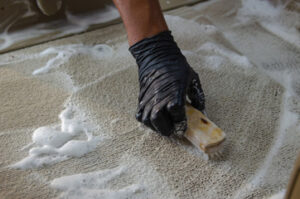Utah Land Survey is a detailed, visual representation of property boundaries. It is conducted by trained professionals and follows specific evidence-based procedures to accurately determine property lines.

Whether you are planning to buy or sell your home, you need to know where your property lines are. A land survey helps you to define those boundaries with a precision that eliminates confusion or conflict and allows you to build, expand or modify your property legally. But first, you need to thoroughly research the land. During records research, your surveyor will examine deed documents, property tax records, plat maps and past surveys of the area to understand the history and identify current ownership. They will also investigate zoning ordinances and land use regulations to determine how the land can be used and any restrictions that may affect the survey.
The information gathered in the research phase enables your surveyor to design an effective survey methodology and target specific areas for data collection. For example, if historical aerial imagery reveals that the survey area has been subject to environmental changes, such as flooding and erosion, your surveyor will adjust their methods to account for these changes. This attention to detail enhances the accuracy and reliability of your survey results.
Additionally, records research can reveal details about the original purpose for which the survey area was created, including its early use for farming or mining activities. This information can help to identify potential hazards or contaminants, ensuring that safety precautions are taken in the field.
Finally, it’s essential for surveyors to collect record descriptions of adjoining properties and any easements that benefit or burden the subject property. These legal agreements can significantly impact survey outcomes.
Advances in technology are enabling more comprehensive and accurate records research, as well as improved data analysis and mapping. Geographical information systems (GIS) allow surveyors to overlay historic maps, aerial imagery and property boundary records on a single digital platform. This streamlined research process reduces time and effort while increasing accuracy. In addition, artificial intelligence and machine learning are facilitating faster and more efficient data processing and pattern recognition. As these technologies become more widely available, they will transform the future of field surveying.
Aerial Imagery
Aerial imagery is a vital tool for land surveying, helping to identify terrain features and accurately determine boundaries. It is also used in environmental monitoring, infrastructure maintenance and disaster response. Additionally, high-resolution aerial images can be used in cartography and mapping and for scientific research in fields like geotechnics, geology, ecology, and archaeology.
Modern professional land surveyors use a variety of digital tools, including GPS systems with satellite imaging, electronic distance measurement devices, 3D scanners, and theodolites. These tools are highly accurate and capable of recording data in a very short amount of time. While commercial off-the-shelf products can sometimes be used by surveyors, it is important for them to have rugged equipment that can withstand the extreme temperatures and humidity of many field locations.
In addition to digital cameras, a land surveyor may also use Lidar technology. Lidar uses pulses of laser light to measure the distance to an object or surface, creating a point cloud that can be used to create detailed 3D maps of the survey area. When combined with aerial photography, this can produce extremely precise results in a very short period of time.
Drones are another powerful tool for collecting aerial imagery. These devices can be used in a variety of ways, including to inspect construction sites and document changes over time. They can also be used to capture images from remote or inaccessible areas that would be difficult or impossible to reach with a traditional helicopter.
An aerial survey can help to prevent encroachment disputes between property owners. This is because it clearly defines the exact boundaries of a plot of land and helps to avoid any unauthorized encroachments onto neighbors’ properties. It is also a good way to show prospective buyers the plot’s size, terrain, and features.
Aerial photogrammetry is a process that stitches together photographs taken from different angles to produce accurate topographic maps. These maps are then used in a wide range of applications, including urban planning, construction management, and infrastructure development. They can also be used to monitor erosion and surface condition, and to identify authorized and unauthorized encroachments on private or public lands.
GPS Technology
Modern technology offers professional land surveyors game-changing field capacities and information handling power. Work that once took large crews and weeks to complete can now be done by small teams in days thanks to tech-based productivity gains. With advancements in GPS, 3D laser filtering and theodolites, drones, 3D scanners and robotic total stations, a comprehensive survey can be performed quickly, with accuracy that is difficult to match by conventional means.
GPS (Global Positioning System) technology uses satellites that broadcast signals to pinpoint a location on Earth’s surface, enabling land surveyors to measure distances and angles with incredible precision. These satellites are available virtually everywhere and provide precise latitudinal and longitudinal positioning in real-time. However, these signals can be interrupted by tall buildings or dense vegetation. Additionally, the speed at which the signal traverses the ionosphere and troposphere can affect accuracy.
This technology is often used in conjunction with optical theodolites or robotic total stations to obtain more detailed spatial data for boundary surveys, as-built surveys, and 3D scanning. It is especially useful in areas with challenging terrain, where it may be difficult to access and where the terrain may impact the accuracy of traditional methods.
Another advantage of GPS is its ability to automatically collect data, which can save valuable fieldwork hours. For example, a robotic total station can monitor readings remotely and assemble spatial data autonomously, freeing up a surveyor to perform other tasks or to work on other projects.
While these technological advancements have improved the efficiency and accuracy of a land survey, they have also introduced a number of new challenges. For example, the accuracy of GPS can be affected by the size and shape of the earth’s ellipsoid or geoid. This can cause distortions in coordinate systems. To compensate for this, surveyors use redundant measurements and independent checks to detect and correct gross errors.
Having accurate, up-to-date land surveying information is essential for property owners and developers. This information can help them avoid costly mistakes and maintain compliance with local laws. It can also prevent encroachment disputes, ensure that construction projects remain within the bounds of existing properties and reduce the risk of litigation. It can even be useful in marketing property to potential buyers, as it can help them understand the property’s topography, elevation and boundaries.
Remote Sensing
Digital innovations have reshaped the world of land surveying and are enabling professionals to work more efficiently and accurately. From GPS and GIS to drones and remote sensing, technology is transforming how surveys are performed.
Remote sensing in land surveying is the collection of digital pictures from a distance using either active or passive sensors on board a satellite, UAV (unmanned aerial vehicle), aircraft or satellite platform. The images are collected and analysed to provide information about the surface of the earth, its natural resources and features. Its relevance is growing steadily, with new sensors constantly being developed, such as the German Aerospace Centre’s TerraSAR-X, TanDEM-X, EnMap and RapidEye, and with it a rapidly expanding field of application.
Land surveyors can use remote sensing to examine large swaths of land for information about the structure of the terrain, its vegetation and soil conditions. This data can also be used to locate underground infrastructure, such as pipes and utilities, and to develop detailed 3D models that can help with construction planning.
One popular method of remote sensing is photogrammetry, which uses aerial photographs to calculate the exact position and distances of objects on the ground. Another is LiDAR, which captures point clouds that reveal the dimensions and shape of structures and a wealth of other useful information about the landscape, such as the proportion of different minerals in a rock face or the thickness of a tree canopy.
The thematic mappers of satellites take data in several wavelengths of electromagnetic radiation and are particularly valuable for monitoring the condition of natural resources on a global scale. For example, they can identify invasive plant species, detect mining activities and monitor deforestation. They can also be used to study the health of indigenous vegetation, and assess crop productivity.
The spatial resolution and accuracy of remote sensing data enables land surveyors to make accurate, detailed maps that can be used for many purposes. This data is particularly important for construction projects, where engineers can incorporate the information into their design plans. For example, an engineer working on a road project will need to know the exact contours of the land to ensure that their design will be safe and cost-effective. This information can also help determine zoning restrictions and environmental constraints that could impact the project’s timeline and budget.








